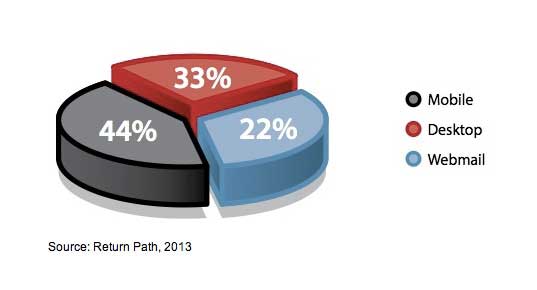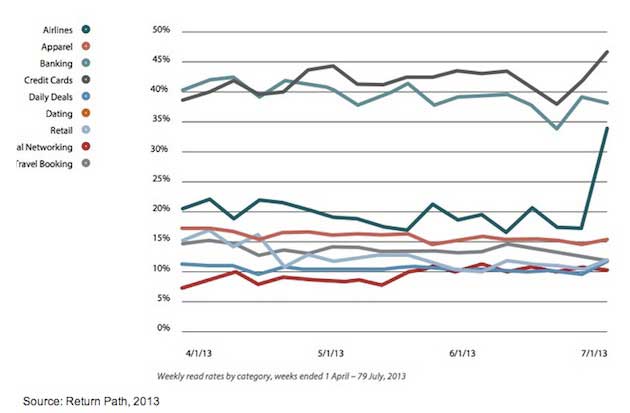The rollout of Gmail's new Tabs feature, which organizes inbound messages by category, has not significantly affected how many marketing emails most consumers read, according to a recent study by Return Path.
Overall, Gmail users with medium levels of engagement read 10.55% of their marketing emails before the launch of Tabs on July 22, and 9.81% of their marketing emails after the rollout.
However, this small decline was partially offset by the fact that they received more of the mail sent to them: Inbox placement rates increased slightly after rollout.
Below, additional findings from the study, which compared Gmail users' read rates in the first week of Tabs' general rollout with data from the previous 17 weeks.
Impact by Engagement Level
- Although the rollout of Tabs did not significantly affect moderately engaged email marketing recipients (88% of all users), it did impact the read rates of highly engaged and less engaged consumers.
- Gmail users who didn't routinely engage with marketing emails before the rollout (11% of all users), read even fewer commercial messages after the launch. The read rate for these consumers dropped from 2.19% to 0.42%.
- Conversely, Gmail users who routinely engaged with marketing emails before Tabs' introduction (also 11% of all consumers) read a slightly higher percentage after Tabs' rollout.
Impact by Industry
The read rates for most industries changed little after Tabs' rollout. However, the read rates for a few verticals were significantly affected:
- Airlines doubled their read rates to 34%.
- Credit card marketers and daily deal messages had their highest engagement in four months.
A Shift to Mobile
- One factor that may have softened the impact of Tabs is the continued shift toward mobile.
- Mobile devices accounted for 44% of email opens during the survey period, and the vast majority of mobile users wouldn't have been affected by Tabs.

About the Research: The report was based on a comparison of Gmail users' read rates in the first week of Tabs' general rollout (on July 22) with data from the previous 17 weeks.






